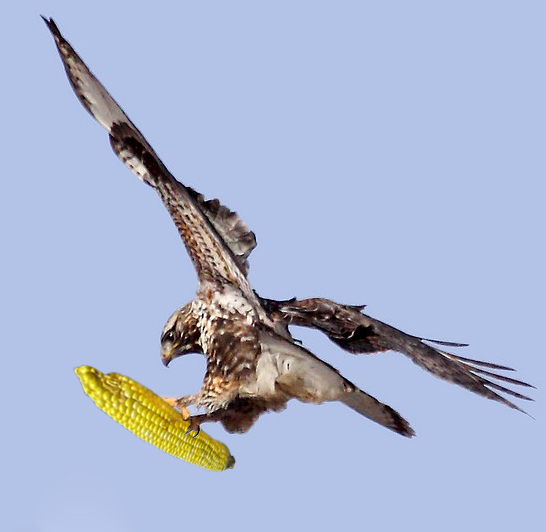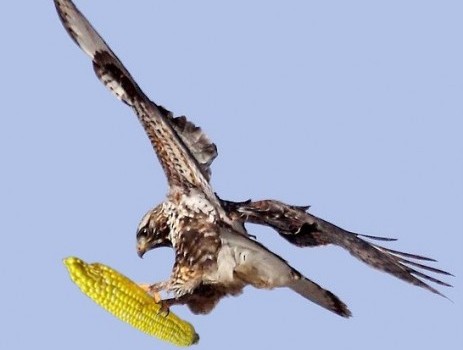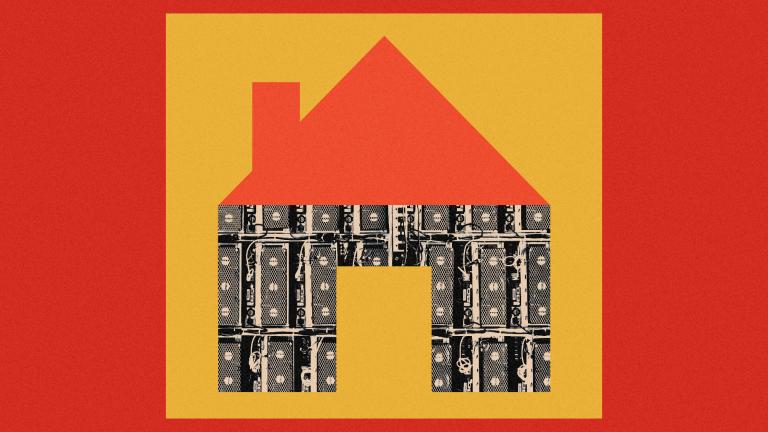 Within a year, Congress and the White House will begin negotiating the next Farm Bill, that monstrously complex piece of legislation that dominates our farm and food policy.
Within a year, Congress and the White House will begin negotiating the next Farm Bill, that monstrously complex piece of legislation that dominates our farm and food policy.
Both sides will do so amid a generalized zeal to slash budget deficits. The new Republican majority in the House swept into power in a wave of deficit hysteria (their own, that is; it turns out politicians and pundits are much more deficit-fixated than the broad public). As Tea Party stalwart Rep. Michelle Bachman (R-Minn.) put it on her blog last week, “Starting in January the majority can focus on reducing the debt, repealing Obamacare, and restoring limited government.”
The Obama administration, too, has displayed its “deficit hawk” feathers, declaring a three-year freeze on “non-defense discretionary spending” in January. In April, Obama created a bipartisan “deficit commission” charged to come up with policies to “balance the budget, excluding interest payments on the debt, by 2015.”
Before I get to what all of this means to food-system reform, let me state that I think it’s imbecilic to obsess about deficits now. The unemployment rate is stuck near 10 percent; another 7 percent of the population qualifies as “underemployed”; and 14.7 million Americans — including a million children — face “low food security” aka hunger pains. Economists such as James K. Galbraith and the Nobel laureates Joseph Stiglitz and Paul Krugman argue persuasively that fiscal austerity at a time of depressed employment just delivers more economic pain, not any impetus for a real recovery.
Indeed, the government can now borrow money at near-zero interest rates. What we should be doing now is investing in the infrastructure for a new green economy. Unlike other proposals for stimulating the economy — like launching yet another senseless war, as one centrist pundit recently suggested — a green-infrastructure program would both put people to work now and and create assets on the ground that will make the economy more efficient and less ecologically destructive in the future.
Learning from school lunches
To see what economic austerity means for the food system, look no further than the Child Nutrition Reauthorization bill, which the Senate may or may not take up in the lame-duck session. The CNR bill dictates how much the government spends on school lunches — which currently amounts to about 90 cents per day per kid for his or her meals’ ingredients.
Poorly funded school lunches paradoxically create a lucrative market for industrial-food giants that know how to turn cheap, suspect ingredients into something palatable. At 90 cents per kid, especially given that few public schools can now maintain proper kitchen facilities, school cafeterias are more and more outsourcing cooking to the food industry, giving rise to such lunchroom delicacies as the “Dinosaur Nuggets” churned out by Tyson, the globe’s second-largest meat company. Such atrocities not only prop up the bottom lines of companies like Tyson; they also help recruit lifelong consumers of bad processed food.
When Obama rolled out his proposal for CNR reauthorization in January, it contained an increase of less than 20 cents per day per kid — not enough even for an extra apple per day. I reacted at the time like this:
This is depressing news, because the (less than!) two dimes Obama is flipping to cafeteria operators would seem to represent a ceiling on any budget increases. In other words, I can imagine any number of “fiscally responsible” Congress critters trying to whittle down this Dickensian allotment; but I can’t picture anyone in either chamber who has the clout to push through a more substantial increase.
Sure enough, by the time the proposal got through the Senate, that modest increase had been hacked to 6 cents — to be offset by an equal cut in food-stamp spending. The House may take up CNR in its lame-duck session; but The Hill warns that conservative lawmakers may fight it as a show of force in their insane battle against deficits.
Whether or not the lunch bill passes during the lame-duck session — no doubt, anything the new Congress comes up with will be even stingier — deficit hawkery has ensured that generations of children will learn in the school cafeteria that the tarted-up junk churned out by Tyson is worthy food. Pinching pennies now, billions in health care expenditures later.
Do as I say, not as I cash checks
Which brings us to the coming Farm Bill fight. Already, the Big Ag and Beltway media are buzzing with stories of how the new Congress, particularly the Republican House, will square deficit hysteria with farm subsidies. The general consensus: “No one knows yet.”
But this recent Associated Press article provides some insight. Reporter Mary Claire Jalonick identifies several card-carrying Tea Partiers in the new House who both thunder against government spending and belong to families that have received hundreds of thousands of dollars in farm payments over the years.
For some in the sustainable-food movement, this is a delicious contradiction with the potential to force real reform in the next Farm Bill. For these people, the key federal policy underpinning the industrial food system and all of its evils are federal farm subsidies. Take them away, and a good-food renaissance will bloom.
But as I argued so strenuously and so often during the last Farm Bill fight (see here, for example), subsidies are a symptom, and not the cause, of a food system geared toward the maximum production of corn and soy, and, by extension, industrial meat. Absent other reforms and measures, if you take them away, you’ll cause plenty of hardship in the Farm Belt, stiff a few high-profile millionaires who receive subsidies, and leave the incentives for maximum corn and soy production largely in place.
Indeed, House deficit hawks are already taking aim at the few federal farm programs that act as checks against mindless overproduction. According to the above-linked AP story, incoming Rep. (and Tea Party favorite) Vicky Hartzler (R-Mo.) is calling for the elimination of the Conservation Reserve Program, which pays farmers to keep ecologically fragile land id
le.
Really taking on the corn-soy-meat colossus that’s fouling our waterways and ruining our diets means creating new incentives in the Farm Belt. That means beefing up, not eliminating, conservation programs; and shifting payments — not slashing them — to reward farmers for things like crop diversity, cutting fertilizer use, and building up soil.
It also means — warning, you may hear the sound of another one of my hobbyhorses clop-clopping up the road — investing in infrastructure for the kind of local and regional food production that Americans are increasingly demanding. As I have argued so many times before — most recently here — the sustainable food movement is unlikely to progress beyond niche status without serious investment in the slaughterhouses, dairy-processing facilities, canneries, and distribution networks that have been dismantled over the last half-century.
All of this requires fiscal boldness, not austerity. Just as President Obama does the nation no favors by appeasing the deficit hysteria emanating from his right, the sustainable food movement will betray itself if it makes common cause with the budget hackers.
So, beware of deficits hawks bearing gifts — even the tasty prospect of slashing farm programs willy-nilly.




